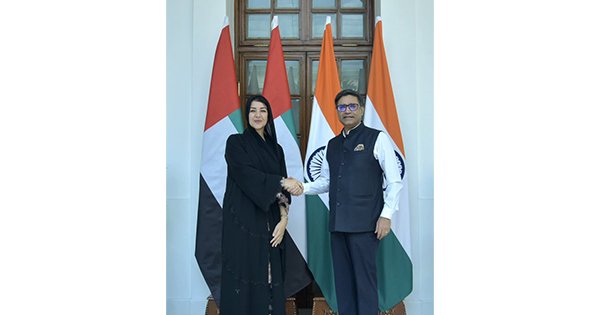India’s consideration of the F-35 fighter jet in response to US President Donald Trump’s offer offers a complicated scenario that necessitates a comprehensive assessment of geopolitical, economic, and operational concerns.
The offer comes as India and the United States increase their defence relations, with both countries looking to improve military collaboration across all sectors. Trump has pledged to dramatically increase military sales to India, including the prospective provision of F-35 stealth jets. However, this idea is still in its early stages, since no official acquisition procedure has been launched.
Acquiring the F-35 might push India farther into the US sphere of influence, jeopardising its strategic autonomy. India has always preferred Russian and French aircraft over American ones because to worries about operational independence and geopolitical constraints.
The arrival of the F-35 might jeopardise India’s own fifth-generation fighter project, the Advanced Medium Combat Aircraft (AMCA), which has received major funding. Ensuring that this indigenous program is not jeopardised is critical to India’s long-term military capability.
Pakistan has expressed alarm over the offer, viewing it as a danger to regional stability. Pakistani authorities have asked the international community to consider the repercussions of transferring sophisticated military technology to India.
The economic issues of procuring the F-35 are varied.
The F-35 program has been criticised for its exorbitant price and performance difficulties. Maintenance and lifespan expenses are important concerns that India must weigh against its financial limits.
The level of technology transfer involved with the F-35 contract is unclear. India will need to analyse the technologies it will obtain and how they will interact with its current infrastructure.
Operational Challenges
The F-35 is praised for its sophisticated capabilities, which include stealth technology and network-centric combat capabilities. However, it offers operational issues.
The aircraft has been plagued by high maintenance costs and dependability issues, which may have an impact on operational readiness for the Indian Air Force (IAF), which is already dealing with a restricted number of fighter units.
The IAF must assess how effectively the F-35 would integrate with its present fleet and operational doctrines, particularly in light of threats from rivals such as China, which has placed modern aircraft near India’s frontiers.
The proposed procurement of F-35 fighter fighters by India might have a huge influence on its relationships with other countries, particularly China and Russia.
If India purchases the F-35, China may see it as a direct challenge to its regional air dominance, since China is quickly modernising its air force with the J-20 stealth fighters. Acquiring F-35s would let India to perform deep-penetration attacks within enemy territory, including much of China, while remaining operationally stealthy, which may concern Beijing. China may see the F-35 sale as part of a larger effort by the United States to limit its dominance in the Indo-Pacific.
Purchasing the F-35 might cause difficulties between New Delhi and Moscow, as Russia has long been India’s primary arms supplier. If India agrees to acquire the F-35, it may have to reconsider its reliance on Russian weaponry since the United States may impose sanctions, or India may have difficulty in integrating American and Russian military equipment efficiently. Russia is already giving India with the S-400 air defence system, which has previously raised worries in Washington.
Pakistan has expressed worry that transferring modern military technologies to India may have an impact on South Asia’s military balance and geopolitical security. If India receives the F-35, Pakistan may retaliate by increasing its military ties with China or obtaining more sophisticated Chinese J-31 stealth aircraft to maintain balance.
While the possibility of procuring F-35 fighter planes might improve India’s air combat capability, it requires a careful assessment of strategic autonomy, economic ramifications, and operational preparedness. India’s decision-making process must carefully assess these aspects to ensure that any action is consistent with its overall military aims and regional security concerns.

